Rules of Golf Review: Can you do that? Take our latest rules quiz and find out – Australian Golf Digest

- by Admin
- September 4, 2024
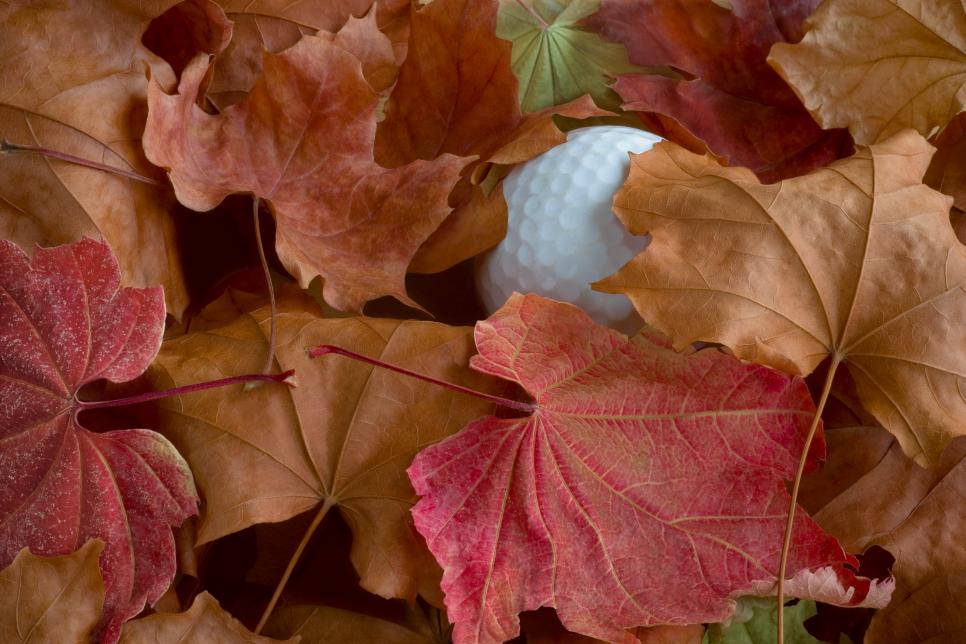
When the Rules of Golf was updated in 2019, the USGA and R&A aimed to improve it in a manner in which they covered all aspects of the game while being as clear and succinct as possible. Yet, avid golfers like yourself know a lot of things happen on the course that still fall into gray areas. Since you can’t always open the rules app on your phone to figure out how to proceed when something unusual comes up—and you’re not a tour pro with the luxury of calling in rules officials at a moment’s notice—now’s as good a time as any to check and see whether you have a firm grasp of what’s allowed and what isn’t.
To help you with this, we’ve put together our latest 10-question quiz to take you through some potentially confusing but not uncommon situations on the golf course. All you have to answer is yes or no to the following (answers at the bottom):
Questions
1. You’re about to tee off and you notice the grounds crew forgot to reinsert one of the two tee markers for the tees you were planning to hit from. So you pick it up, estimate where it should go based on the other marker, place it down and tee off. Can you do that?
2. Your ball is resting against an out-of-bounds stake. You pull the stake out to hit your next shot and your ball accidentally moves, so you put the ball back in the right spot and hit your next shot. Can you do that?
3. You hit a ball into the woods and don’t feel like searching for it. You reload and hit another shot down the middle of the fairway and start walking. When you get up to your second ball, you see that your first is clearly visible and you decide, since it’s within three minutes of search time, to go chip that original ball back into play and pocket your second ball. Can you do that?
Russell Illig
4. You’re playing in October and hit a shot that lands in a bunch of leaves that have been piled for removal by the maintenance staff. You take free relief from the pile and play on. Can you do that?
5. You take a drop as one of your options after hitting a ball into a penalty area. Your ball hits the ground, then skims your golf shoe but stays within the proper drop area, so you play on. Can you do that?
6. You thin a shot from the bunker and the ball lodges into the grass lip at the top. You take free relief for an embedded ball, drop in the bunker and play on. Can you do that?
7. Your ball is sitting atop some reeds in a penalty area. You’re going to play it but first you take some practice swings a few feet to the side of the ball to see how your iron cuts through the reeds. In doing so, you damage some of them. Can you do that?
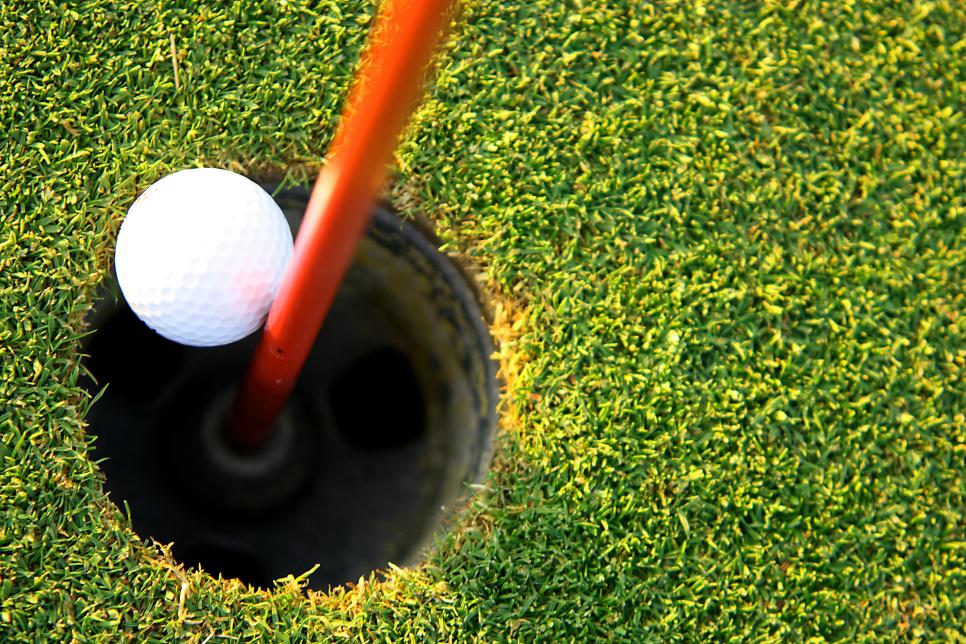
Cappi Thompson
8. Your ball is wedged against the flagstick and the hole with most of it above the surface of the cup. When removing the flagstick, the ball pops out and is resting on the edge. You tap it in, but claim it was holed with the previous stroke. Can you do that?
9. Your putting has been horrible. Upon making the turn, you stop at the practice putting green between the ninth and 10th holes and hit a few putts to work on your stroke before catching up with your group as it’s about to tee off. Can you do that?
10. You hit a ball toward a soggy area of the course. Upon reaching the area, you see a ball caked in mud that might be yours, so you pick it up and clean all the mud off so you can identify it. It’s yours, so you replace it and play on. Can you do that?
More From Golf Digest  Rules Review Rules of Golf Review: I conceded a stroke thinking it tied a hole, but it gave my opponent a win. What now?
Rules Review Rules of Golf Review: I conceded a stroke thinking it tied a hole, but it gave my opponent a win. What now? 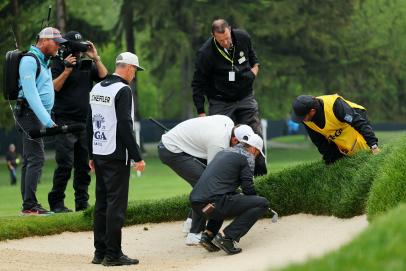 Rules Are you smart enough to ace this basic Rules quiz?
Rules Are you smart enough to ace this basic Rules quiz? 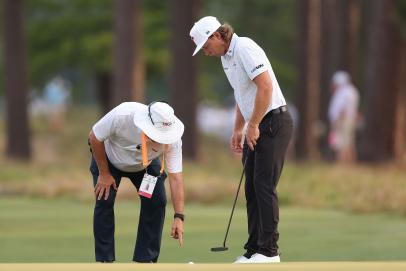 Rules What goes on inside the rules office at a major championship? We got a glimpse Answers
Rules What goes on inside the rules office at a major championship? We got a glimpse Answers
1. Yes (Rule 6.2). If you find one or both tee-markers missing, you should first seek help from the committee/course as to where the markers should go. If no one is around or not available to assist in a reasonable amount of time, you can use your best judgment (Rule 1.3b(2)) to estimate the location of the teeing area.
2. No (Rule 8.1).You do not get free relief from objects that define or mark the course boundary. You may not move objects marking course boundaries or take free relief from them like you would from other artificial objects, such as a cart path, a building or a stake marking a penalty area. Your options are to play your ball as it lies, proceed under penalty of stroke and distance by playing again from the spot of your last stroke (see Rule 18.1) or decide your ball is unplayable (see Rule 19.1) and follow the procedures for relief while adding a penalty stroke.
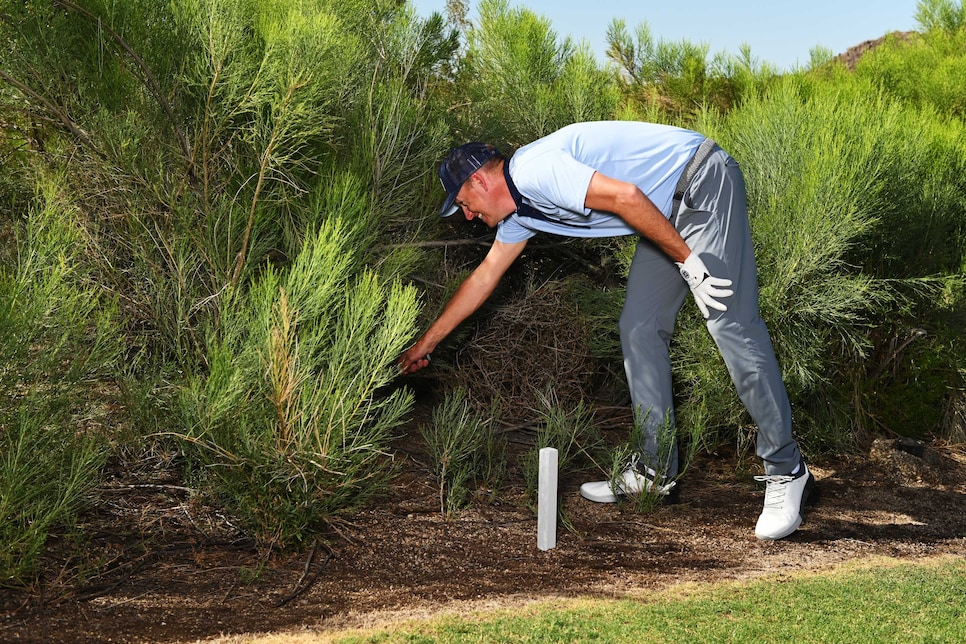
J.D. Cuban
3. No (Rule 18.1).Without announcing the second ball off the tee was a “provisional,” hitting it is treated as taking stroke-and-distance relief, which is an option anywhere on the course. You have to take a penalty stroke and continue on with that second ball. The original ball must not be played.
4. Yes (Definitions/Rule 16.1).Even if not marked, grass cuttings, leaves and any other material piled for later removal can be considered ground under repair. You may either play your ball as it lies or take free relief. To take relief, you must find the nearest point of complete relief from the ground under repair and drop your original ball or another ball away from the ground under repair and within one club-length of that point not nearer the hole (see Rule 16.1).
5. Yes (Rule 14.3c(1)/1).A dropped ball can’t touch you or your equipment before hitting the ground, but if it happens after landing, there is no penalty and the drop procedure is considered completed.
6. No (Definitions/Rule 16.3b/1).You are entitled to relief from the grass lip of a bunker, but that relief must be taken in the general area of the course and bunkers are not considered part of the general area. In this case, you should find the nearest spot in the general area that is not nearer the hole to the spot immediately behind where the ball embedded, and this spot becomes the reference point for establishing a relief area under Rule 16.3b. Keep in mind that depending on the size of the bunker, this spot could be some distance away.
7. Yes (Rule 17.1b).So long as your practice swings didn’t somehow improve conditions affecting the next stroke (Rule 8.1), you’re allowed to damage the reeds. You can even ground your club in the penalty area as long as you’re not improving conditions affecting the next stroke.
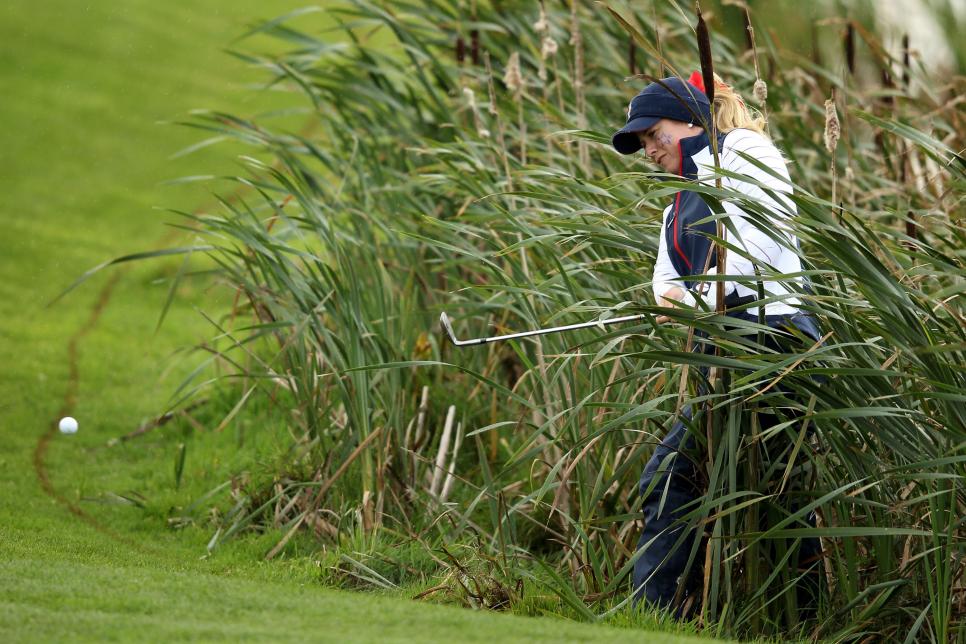
Ian Walton
8. Yes (Rule 13.2c).If any portion of the ball is below the surface of the green, the ball is considered holed regardless of whether it stays in the cup upon removal of the flagstick.
9. Yes (Rule 5.5b).You can practice chipping or putting on the green you just completed or on any practice green, so long as a Model Local Rule isn’t in place (like it is on the PGA Tour). Just don’t delay play in doing so.
10. No (Rule 14.1c).You can only clean the portion of the ball necessary to identify it. If you clean the whole thing indiscriminately, it’s a one-stroke penalty.
MORE GOLF DIGEST RULES REVIEWS
What do I do if my ball just hit another ball on the green?
Can you chip a ball on the tee while waiting for the group ahead of you to play?
I hit myself with my own ball. Is that a penalty anymore?
What exactly is an embedded ball?
I hit a horrible shot. I’m way better off if I don’t find it. Can I just declare it lost?
When does the three-minute search time for a lost ball actually begin?
Does a ball have to be unplayable to declare it unplayable?
I accidentally hit my ball with a practice stroke … does it count?
I’m on the green. My opponent is not. Who’s away?
I bent my putter and it actually works better. Can I still use it?
Somebody just picked up my golf ball! Now what?
This article was originally published on golfdigest.com
The Latest News
-
January 4, 2025Horse Racing News: Holymanz strikes again at Geelong races
-
January 4, 2025Australia coach calls out ‘intimidating’ India celebrations, reveals Konstas chat
-
January 4, 2025Bumrah under cloud as India reveal back spasm | cricket.com.au
-
January 4, 2025Biggest curveball of summer that could decide series; Beau ‘earns his stripes’ in coming of age: Talking Pts
-
January 4, 2025‘Got a spell on him’: Inside King Kohli’s last stand… and one regret he will have after Boland blitz




